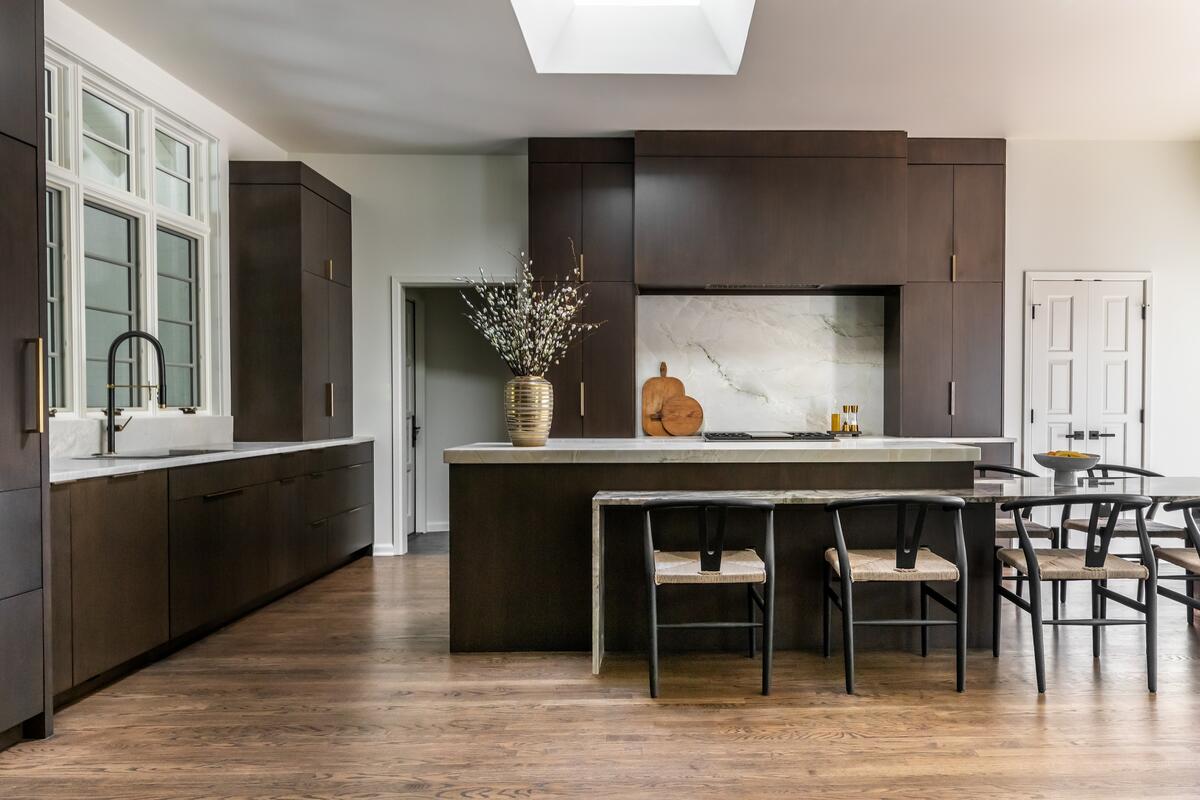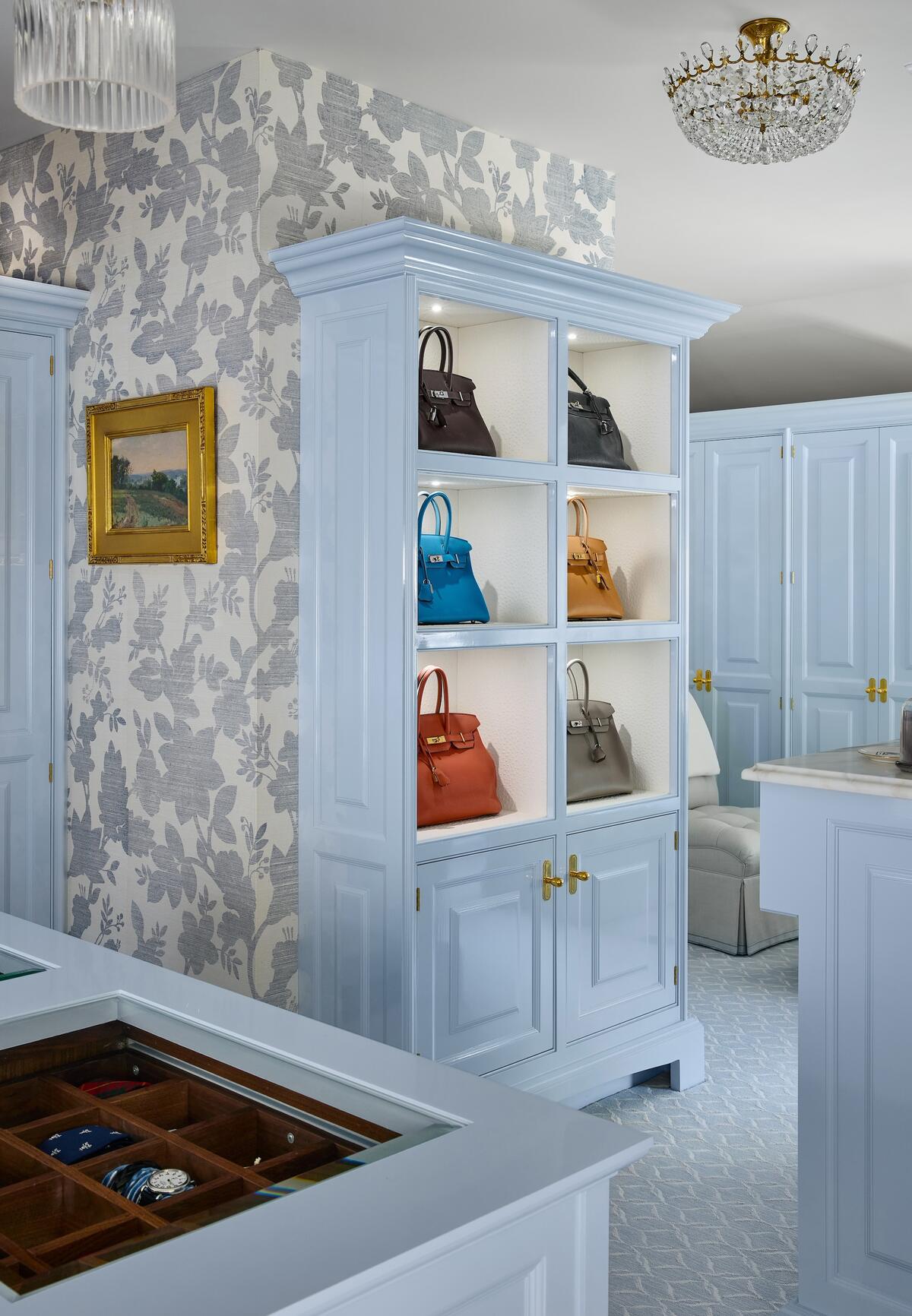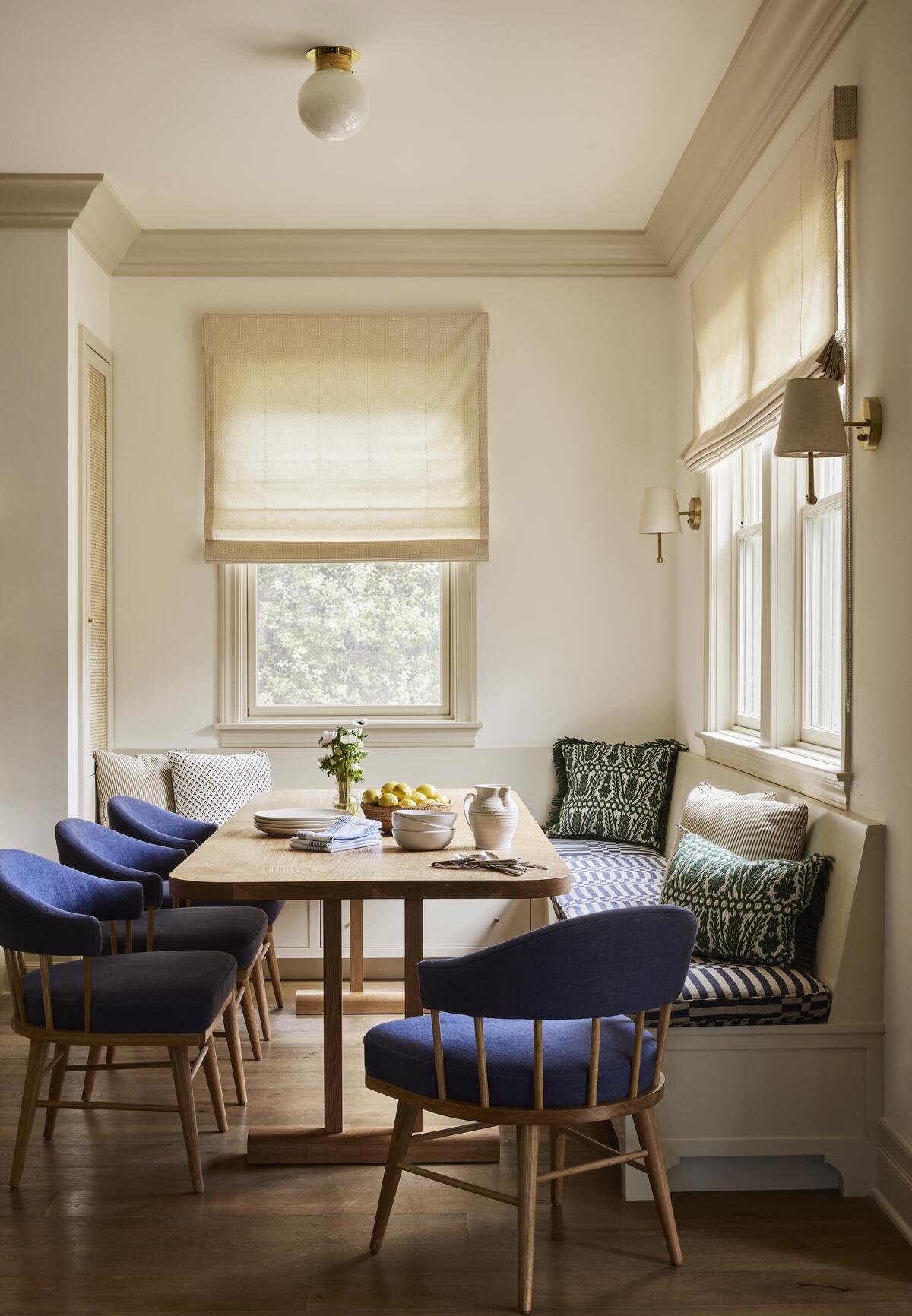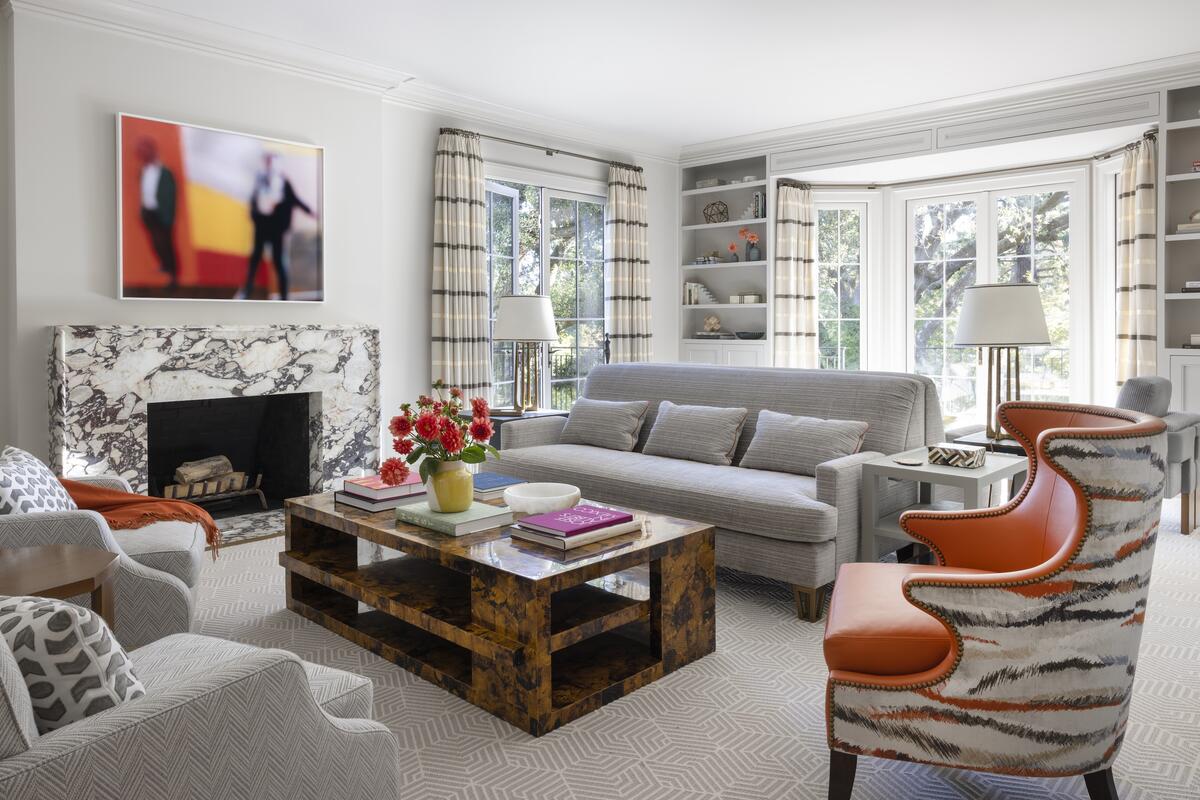A good relationship with your vendors can make a project sing. Here’s how to get it right.
In her first design internship, Shana Sherwood picked up a crystalline bit of business advice—the kind that still bounces around your head more than a decade later. These days, she is a partner at Sherwood Kypreos, the Los Angeles studio she co-founded with her husband in 2018. But in 2009, she was a student juggling internships at two “very Upper East Side” firms when one of the principals emphatically told her not to share her vendors with the other. “When I asked her why, she said, ‘Because you’re only as good as your vendors,’” recalls Sherwood, who has taken the message to heart (but without the competitive mindset). “At the time, I had no idea what she meant. But now, running my own firm, I get it. It’s true—you’re only as good as the people you choose to work with.”
FINDING SOURCESCultivating meaningful relationships with the partners who elevate your work can make your projects easier—and more enjoyable too. So, how do you find those magical partners that you want to work with again and again? Thankfully, attitudes about sharing sources have come a long way since Sherwood’s internship days, and most designers are more than willing to tip each other off to great vendors, whether it’s a trustworthy workroom or a fabulous wallpaper installer. Melissa Warner Rothblum, co-principal of Massucco Warner, an interior design firm based in Los Angeles and Seattle, says that a referral from a colleague is an ideal starting point when trying out a new subcontractor or brand. “If a designer friend has had a good experience with someone, that does hold a lot of weight,” she says. Sherwood agrees, estimating that referrals are how she finds most new resources. “Especially when we’re doing a project somewhere [less familiar] like New York, I’m going to ask my design friends there who they recommend,” she says.

Intuition comes into play as well. “There’s a gut feeling the first time you speak with someone, where you sort of know: We’re going to get along,” says Warner Rothblum. If she’s taking a risk on a subcontractor whose work could significantly impact the outcome of a project (for instance, a new upholstery workroom), she often tries to find a small job for them in her own home as a dry run. “That way, I can honestly say that I’ve seen their work firsthand before using them professionally,” she says.
It can be a different story when you’re not based near a major city and there’s a dearth of fabricators, let alone design centers. Bailey Austin Bird, a designer based in Tulsa, Oklahoma, relies on her annual trips to trade shows like High Point Market to meet sales representatives and see new inventory at her preferred brands. “There are so many lines that are just never going to send a rep to Tulsa,” she laments. “If I don’t go to Market, I’m never going to see it in person.” That said, the brands that do make the extra effort to get to know her and her firm’s needs can feel like an extension of her team. “We have one rep with a bunch of lines who is based in Oklahoma, and she’s been incredible to work with—she even makes a point to reach out and ask what kinds of pieces we haven’t been able to find, down to certain table heights we might need,” says Austin Bird. “Sourcing can be really labor-intensive, so to have that kind of relationship with someone is very valuable to me.”
MAINTAINING RELATIONSHIPSOnce you have a reliable network of sales reps, fabricators and other subcontractors, cultivating those relationships can make all the difference when you need a vendor to go the extra mile. Sherwood had a relatable incident recently when a custom sectional wouldn’t fit through an interior door. “I probably shouldn’t admit to this in print, but I called my upholsterer, like, ‘What do I do?!’” she says. “You can verify all the things, and then the install day comes and something still goes wrong. Within a few days, my upholstery workroom turned a two-part sectional into a three-part sectional that could fit through the door. By developing a good relationship where she respected me and vice versa, she was more willing to help me when I needed it.”
Austin Bird finds that the people she has worked with the longest are more willing to go above and beyond for her. “Sales reps have a lot more influence than people realize,” she says. “If you’re trying to meet a tight deadline, and you’ve been a good client and you’re nice to work with, they’re way more apt to go to bat for you and be like, ‘Hey, she really needs this by Christmas, even though she just ordered it.’ It’s not a guarantee of a yes, but you’ll know that they’re going to do their best.”
Part of setting up a good relationship hinges on the vendor having all the information they need when they need it. Warner Rothblum stresses that if you are clear and precise—whether with your measurements, your timeline, or any other information a third party might need—things are more likely to turn out correctly. “Writing very specific purchase orders can make such a difference,” she says. “Especially [when working with] someone like an upholsterer, the more information you can provide, the better the results.”
Giving your collaborators realistic deadlines to complete their work is another way to keep things cordial. Regularly rushing your subcontractors or sales reps is a surefire way to be labeled a problem client. “I’ve worked with people in the interiors industry who didn’t have realistic expectations of their vendors, and it makes things so much more difficult,” says Sherwood. “There are people who try to negotiate, like, ‘I want this piece to be amazing quality, but I need it next week, and I’ll give you $5.’ I’m not interested in working that way. If I know I don’t need a sofa for seven months, I’ll tell my fabricator that so they can make their schedule accordingly.”


Nurturing vendor relationships is sometimes as simple as building a track record as a cordial customer and always paying your invoices on time, but adding a personal component can do a lot to cement a friendly dynamic. “I probably have two or three dinners out a month with a supplier, contractor or architect we work with regularly,” says designer Frank Ponterio, whose studio operates out of Chicago and Naples, Florida. “My team and I also make a point to visit our favorite showrooms or stop by certain booths at trade shows just to keep that relationship in a good place. It’s a two-way street—we want to be appreciated as designers; the people we work with want to be appreciated too.”
Another benefit of a longer working relationship is that you and the vendor can learn each other’s preferences and processes. “I know that one of my custom furniture vendors wants the wood finish picked upfront, so I always include [that] selection when I send them a purchase order so there’s no need for additional back-and-forth,” says Warner Rothblum. “Some of my fabric reps will tell me, ‘I know how you like a chair skirt to lay, and you’re going to hate the way this fabric lays—let’s pick something else.’ It saves a lot of time and makes my job easier.”
PARTING WAYSSometimes, despite your best efforts, a relationship with a vendor doesn’t work out. Whether it’s due to a personality conflict or a diminished quality in the work, that’s OK—and it’s important to be honest with yourself about which partnerships are worth hanging on to. Ponterio evaluates his vendor list at the end of every year, compiling a “naughty or nice” list with his team. “It involves copious amounts of red wine and the entire team sitting around thinking about who really helped us do our best work that year,” he says. “Who do we send thank-you notes to, and how do we show our appreciation? Who do we want to try to use next year, and who do we not want to work with again? It’s a time of reflection that is paramount for us.”
The firm’s “naughty list” isn’t necessarily a catalog of vendors who made mistakes that year. Instead, it’s composed of companies and subcontractors that offered less-than-stellar customer service or refused to take accountability for mistakes. “Our job is to deliver a great client experience, and it’s typically pretty apparent what that would take,” says Ponterio. “If we get a piece that’s damaged, and the showroom isn’t willing to work with us on a replacement, they’re probably going on the naughty list.”

A company’s culture can play into the decision to end a working relationship as well. Austin Bird cites one vendor that always makes her feel like an afterthought. “I love the product, but there’s an attitude that we’re lucky they let us have an account,” she says. “The results are always beautiful, but every time I want to specify something from them, I question whether it’s worth dealing with them. I feel like they could kick us to the curb at any time—we’re one price hike away, I’m sure. If I am taking the time to support your business, I would like to feel supported in return.”
Warner Rothblum says there are a few deal-breakers that will prompt her to move on from a vendor. “If they tell me that something can be ready by my deadline and don’t indicate that there’s any issue throughout the process, and then the deadline arrives and it’s not ready, that’s a big red flag,” she explains. “My other big thing is that they have to behave respectfully and professionally in a client’s home. Anyone who steps in the client’s home is representing our firm, and I expect them to behave as such.”
For Sherwood, a vendor overpromising and underdelivering is cause for a split. “We had one woodworker who made beautiful pieces, but there were consistently issues with the finished product,” she says. “There were a few instances where the quality of the fabrication just started to slip, and I had to stop working with him.”
BEST FOOT FORWARDWhile a client may never know just how many relationships you have to foster in order to pull off a beautiful result, they benefit immensely from the work that goes into forging those connections. More than that, they’ll likely notice the difference as the project unfolds.
“Our clients comment all the time about how great our wallpaper installer is. We’ll hear, ‘Wow, he is so detailed, and he’s such a treat to be around,’” says Warner Rothblum. “It’s so meaningful to know that when there are vendors in our clients’ homes, their presence is enjoyed. It enriches the experience for the client to feel like they have these amazing craftspeople who are making their house a home.


